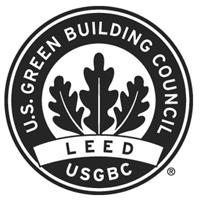Drip irrigation precipitation rate and irrigating slopes

The requirements for irrigating hillsides and slopes are somewhat unique. It is particularly important, for example, that the water application rate does not exceed the infiltration rate of the soil. If it does, run off, potential erosion and landslides are possible. Needless to say, the associated liability in this type of situation can be extremely significant.
The equivalent precipitation rate of a drip irrigation system is much less than that of an overhead spray system. With the proper cycle time it can apply water at rates close to the percolation rate of the soil while still satisfying the areas water requirement. Therefore, the possibility of erosion, using a drip irrigation system, is much less than with any alternate approach. Besides minimizing the potential for run-off, the use of drip irrigation can be a major factor in conserving water. Since a drip irrigation system is intended to deliver water directly to the plant’s root zone, water is not wasted by irrigating areas between the plants. It can also conserve water by minimizing water loss due to evaporation and wind effects.
Using drip irrigation systems on slopes can provide another advantage, particularly in situations where the landscape includes plants of different water requirements. By adjusting the number of emitters per plant, and their individual flow rate, each plant can, in effect, have its own irrigation system. When one considers that a plant can have almost any number of emitters and the flow rate of each emitter can vary by a ratio of at least four-to-one, there is almost an infinite combination of possible water flow rates available to satisfy any plant’s water requirement.
Often times, it is difficult for the installing or maintenance contractor to keep their footing while walking on these slopes and use the lateral lines as footholds. This being the case, the potential for stepping upon and ultimately breaking pipe laterals exists. The use of flexible PVC hose can minimize this problem. In many cases, working on a fairly steep slope can be slow, tedious and somewhat expensive. Thus, anything that can be pre-assembled, in the factory or the contractor’s yard, will save time and money. Also, to minimize installation cost on slope applications, it is usually recommended that the system be installed on the surface of the slope (rather than buried), and pipe stabilizers or stakes used as well. However, to enhance short term aesthetics and minimize any potential vandalism or negative environmental effects, it is also recommended that the system be covered with mulch or some other protective type of material.



_.png)




















